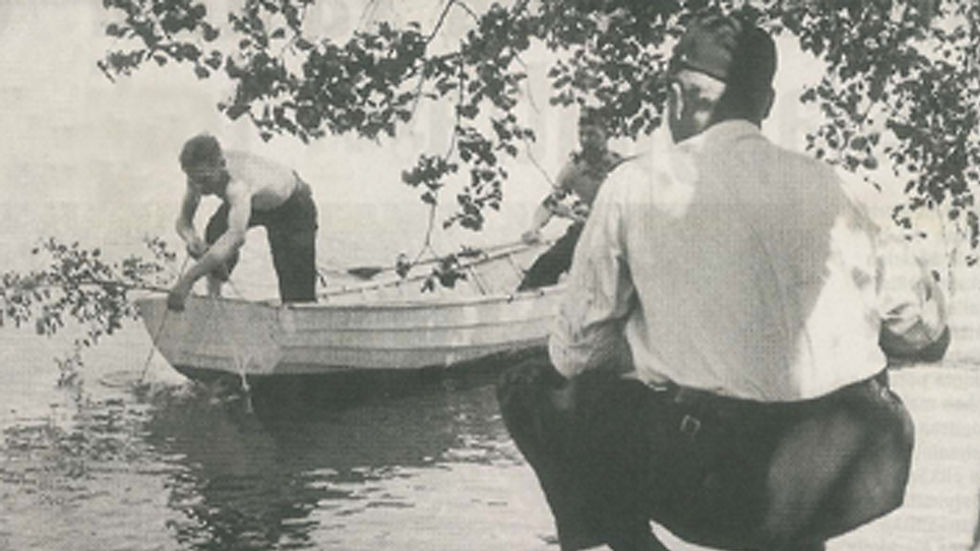MURDER MYSTERY: The Real Children of Bodom
- Rob

- Sep 5, 2020
- 3 min read
Updated: Sep 26, 2020
You may be familiar with Children of Bodom, the Finnish death metal band who garnered huge success over their twenty five year career before laying down their axes last year. But you maybe less familiar with the most infamous unsolved mysteries in Finnish history, which the band derived their name from.

It was June 4th 1960, the year previous, the recently 'solved' Dyatlov Pass incident took place in neighbouring Russia and started a timeless obsession with the mysterious region. However, the mind bending deaths of three teenagers on the shore of Lake Bodom barely made a whimper outside of Finland.
THE VICTIMS

On a crisp summer's day, 15-year-old females, Maila Irmeli Björklund and Anja Tuulikki Mäki, and 18-year-old males, Seppo Antero Boisman and Nils Wilhelm Gustafsson decided to camp on the shore of Lake Bodom situated near Espoo, the second largest city in Finland.
Only one of them would survive the night.
THE CRIME

By 06:00 of June 5th, three of the party had been brutally murdered and a fourth left with concussion, a broken jaw and a fractured cheek bone.
Boisman and Mäki lay slain in their tent with the attacker ripping through the tent from outside with a knife before slashing them and bludgeoning them with a blunt force weapon, likely to be a rock.
Survivor Gustafsson's girlfriend Björklund was found atop a battered tent, naked from the waist down and killed in a frenzy of knife wounds. Björklund was by far the most attacked.
At 06:00 a group of birdwatchers, from a distance, saw a blonde man walking away from the camp and later a local fisherman corroborated this report. But being Scandinavia, being blonde wasn't enough to go on.
THE INVESTIGATION

The police investigation was haphazard but they did locate a number of curious clues. Gustafsson's shoes were found half a mile away from the crime scene along with some clothing. The keys to the boy's motorbikes were taken but the bikes remained where the boy's had parked them. However, some personal items were missing and the murder weapon was never found.
Due to his injuries Gustafsson was not an initial suspect and told police he remembered a man in black and red approaching the camp before blacking out.
THE SUSPECTS

Valdemar Gyllstrom was a local kiosk owner and was known to be aggressive to campers who caused a noise disturbance, throwing rocks at their tents and slashing their guide ropes. Although Gyllstrom was the boogeyman and subject of many camp fire stories of how he'll slash through your tent when you're sleeping, the police never had enough evidence to charge him. His wife gave him an alibi for the entire night in question (as she would have...).
Later, it was claimed that Gyllstrom drunkenly confessed to the murders to a friend, but soon after he killed himself by walking into Lake Bodom.
Another suspect was the unfortunately named (for English language countries) Hans Assmann. A reclusive man who lived on the shores of Lake Bodom, Assman, was rumoured to be an ex member of the KGB.
The next day Assman took himself to the nearby Helsinki hospital muddy and covered in blood. Assman matched the description of the blonde man but neither his clothes or the blood on them was investigated after the police claimed he had a rock solid alibi.
The case went cold though and no charges were brought until 2004.
THE BREAKTHROUGH

44 years after the Lake Bodom murderers a surprising arrest shocked Finland. Police arrested and charged Gustafsson with the murder of his three friends. Gustafsson, then 66 and a bus driver, became a suspect again after newly developed blood DNA testing showed that blood on Gustaffson's shoes, which he wouldn't have been wearing in the tent when attacked and were incidentally found away from the camp, proved that he committed the murders.
The trial started in early 2005 with the prosecution calling on witnesses to describe the events of 1960, one of which who had not come forward until now. With scant confidence in the witness testimony the trial hinged on two pieces on blood analysis, Gustaffson's shoes and the defense's claim that blood spatter found inside the tent showed that he was attacked in the tent by a third party.
Ultimately the burden of proof was not enough to convict Gustaffson and he was acquitted on all charges.


























Comments